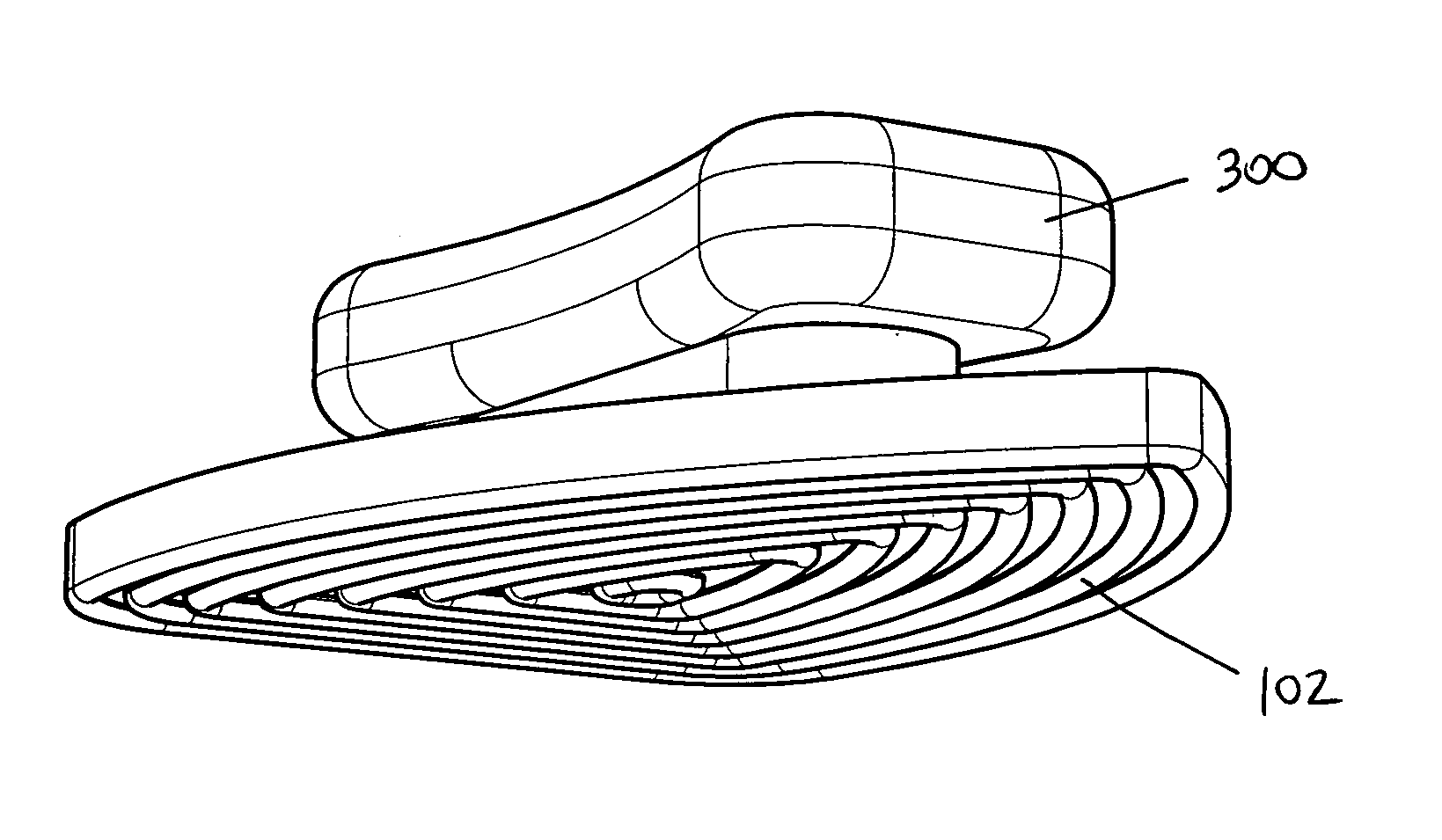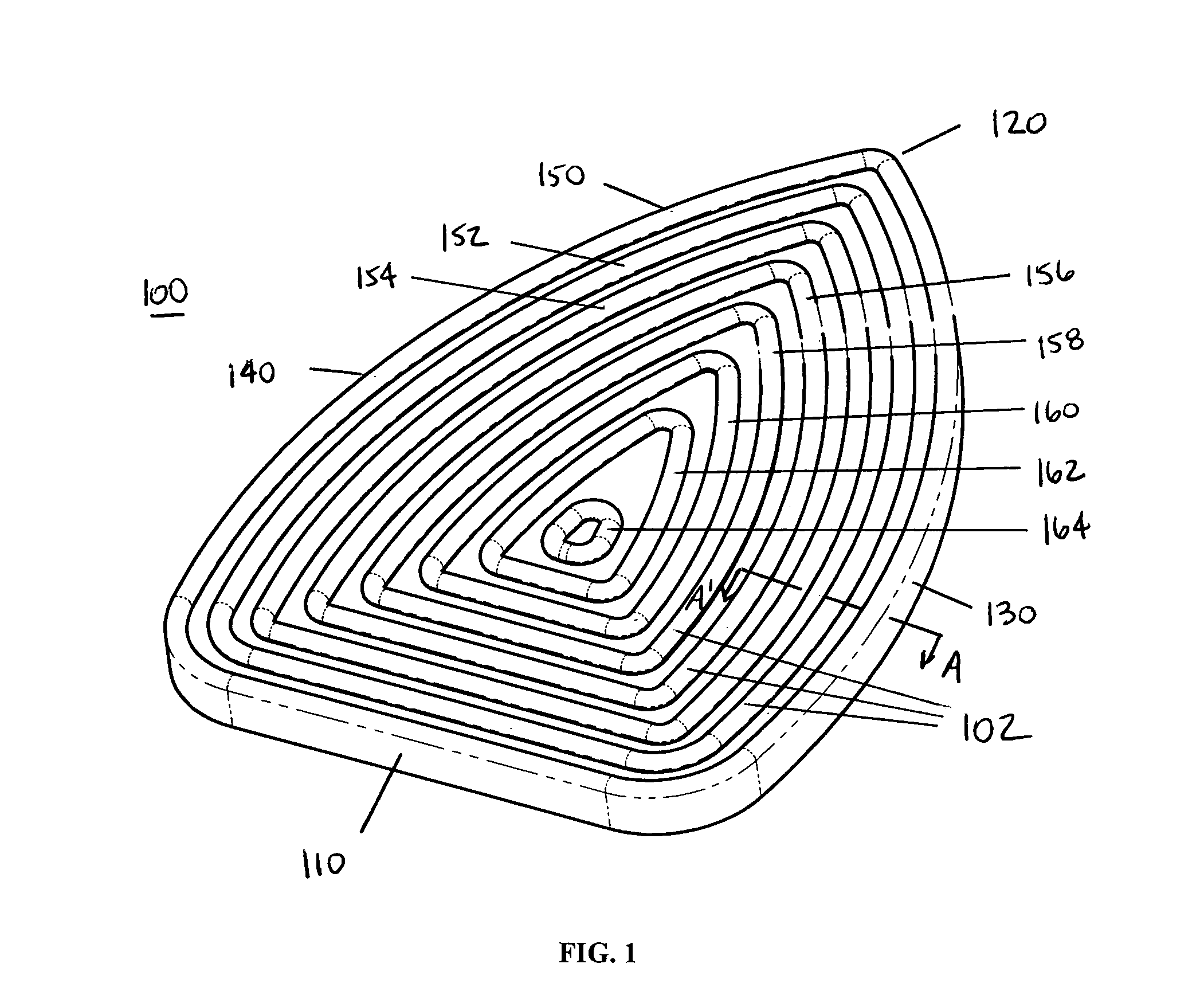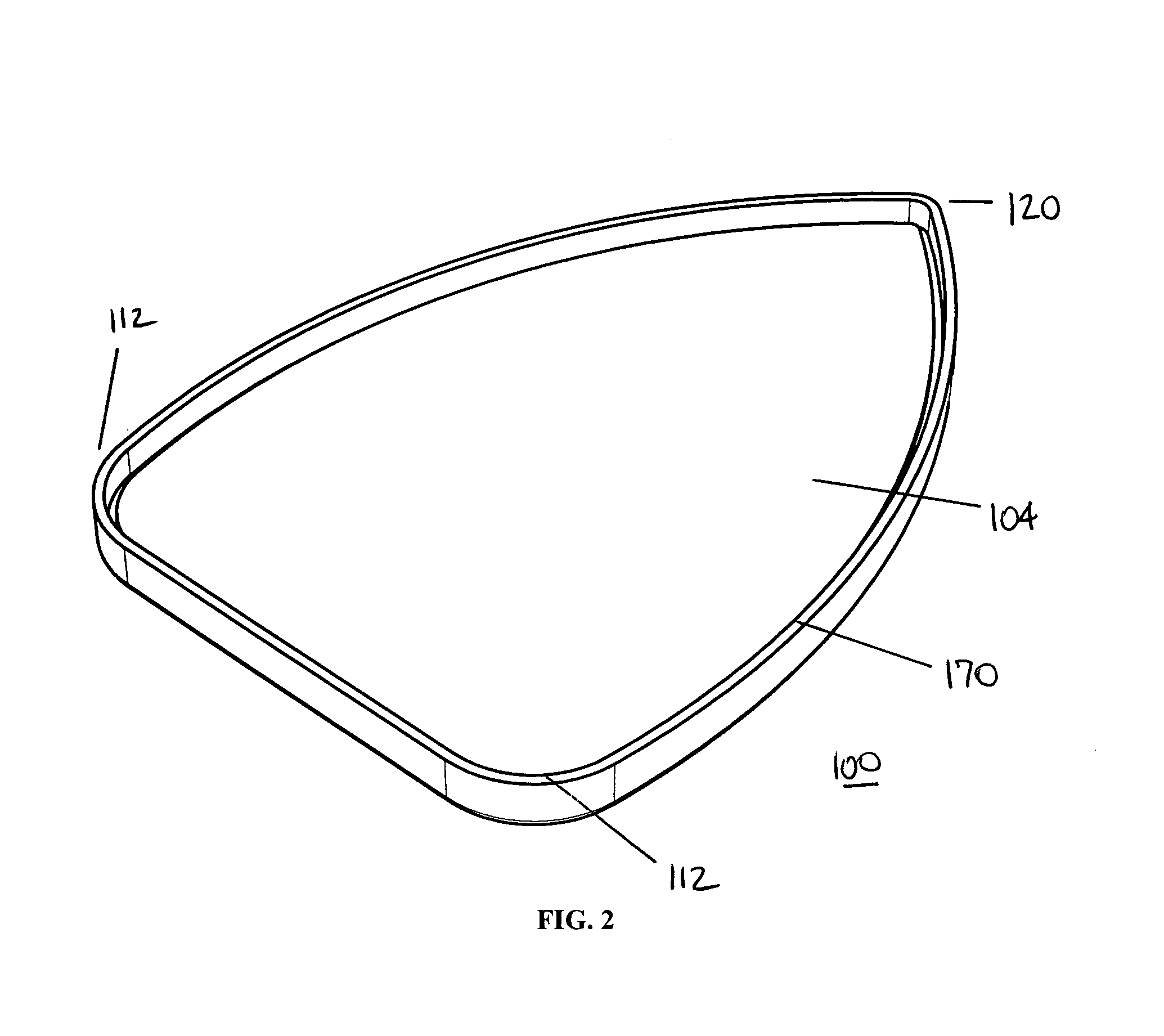Method and apparatus for plaster burnishing tool
a technology of burnishing tools and burnishing tools, which is applied in the direction of manufacturing tools, cleaning using liquids, and ways, can solve the problems of slow progress of manual use of tools, time-consuming manual process of tools, and fatiguing, time-consuming and expensive process, and achieves efficient burnishing of plaster. , the effect of improving the gloss
- Summary
- Abstract
- Description
- Claims
- Application Information
AI Technical Summary
Benefits of technology
Problems solved by technology
Method used
Image
Examples
Embodiment Construction
ABT tool with Ryobe™ Power Sander
[0046]The ABT tool can be used by hand or can be attached to an oscillating power tool such as an oscillation sander. In this embodiment, the ABT is designed to be installed on a small hand sander that typically is used for abrasive grit sanding.
[0047]In one embodiment, the ABT is attached to the sander using a hook and loop fastener means that is adhered to the ABT tool. The sander thus eliminates to need to hand rub the ABT against the plaster to achieve the burnished finish. In other embodiments, the ABT tool may be attached to the sander with an adhesive, a clamping means, recessed screws, or other mounting means. The outer back edge of the ABT base may have a ridge that slips over the outer surface of the sander pad to facilitate quick and accurate placement of the ABT tool on the sander.
[0048]In this example, the ABT tool has continuous ridges with smooth round edges on a working face that allow the plaster to be burnished without gouging. The ...
PUM
| Property | Measurement | Unit |
|---|---|---|
| Efficiency | aaaaa | aaaaa |
Abstract
Description
Claims
Application Information
 Login to View More
Login to View More - R&D
- Intellectual Property
- Life Sciences
- Materials
- Tech Scout
- Unparalleled Data Quality
- Higher Quality Content
- 60% Fewer Hallucinations
Browse by: Latest US Patents, China's latest patents, Technical Efficacy Thesaurus, Application Domain, Technology Topic, Popular Technical Reports.
© 2025 PatSnap. All rights reserved.Legal|Privacy policy|Modern Slavery Act Transparency Statement|Sitemap|About US| Contact US: help@patsnap.com



